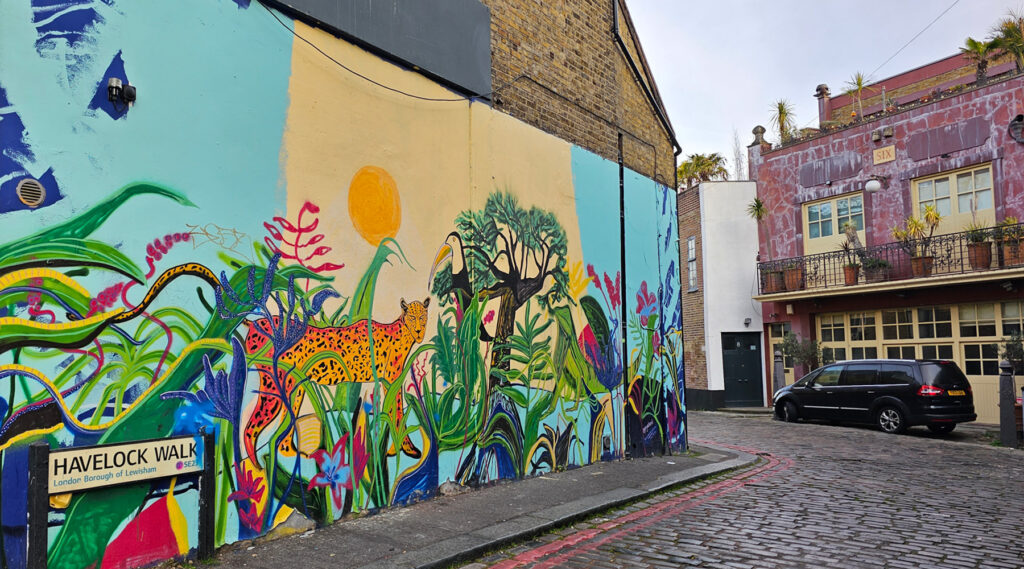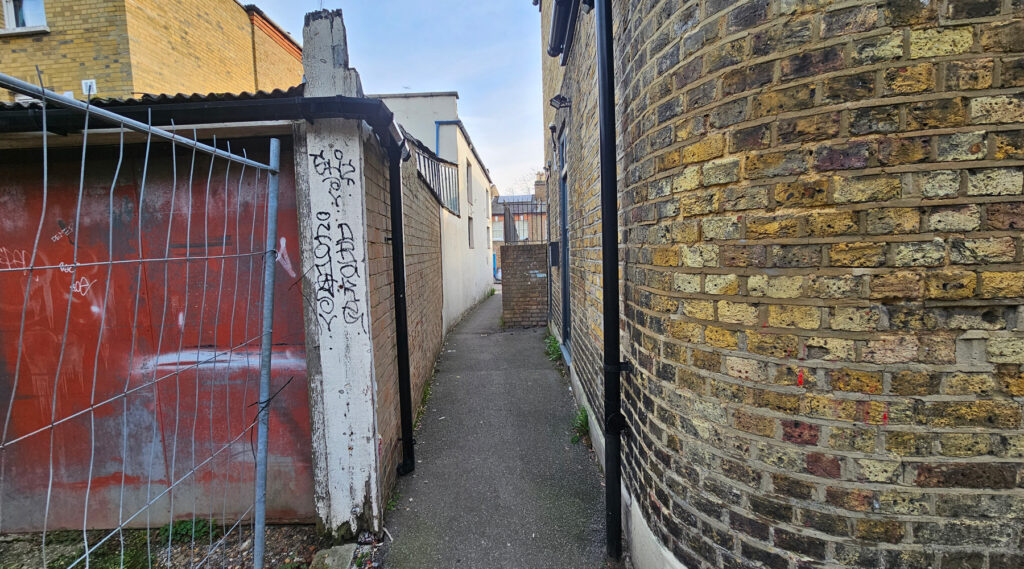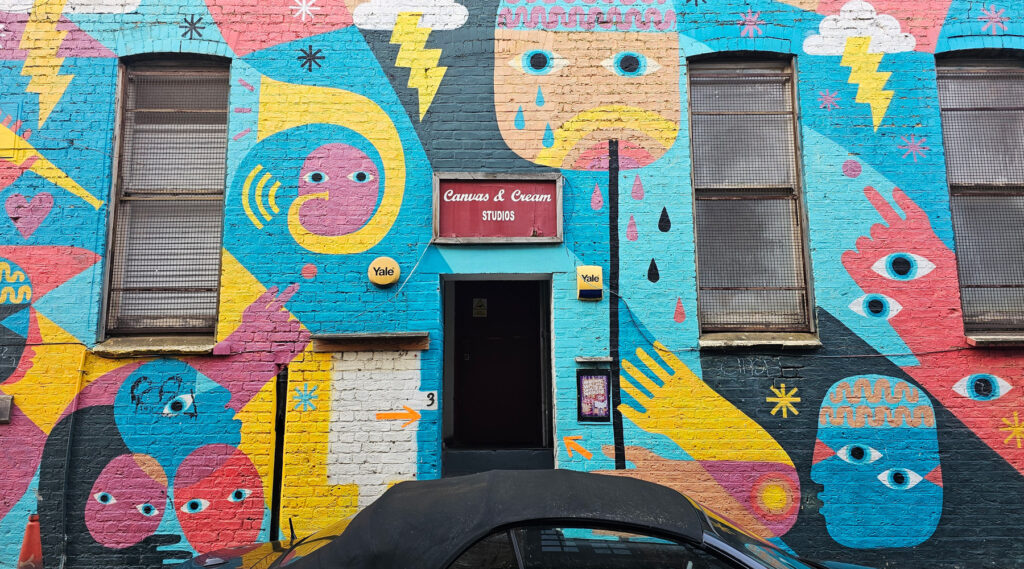A short walk from Forest Hill station is this old mews that’s now a haven for artists who have taken its long row of former warehouse buildings.
It’s a long cobbled* passageway that leads off the main street, and ends at the far end in a narrow pedestrian only gap between the houses. It first seems to appear in the 1850s, as a path in the fields that are just starting to be developed into housing thanks to the arrival of the London & Croydon Railway in 1839.
At the far end of the alley used to be a decent sized dock where the Croydon Canal turned and ran roughly alongside where Havelock Walk is today. Most of the canal had long been filled in when Havelock Street started to appear, but the remnant at the end shows up as the Old Canal on a map from 1879.
The origins of the name are a bit unclear, but the main road it leads off is called London Road, but back when the area was still developing, the small section close to the railway station where this alley leads off was called Havelock Terrace.
Originally called Havelock Street, it was renamed Havelock Way at some point just before WWII, and renamed again as Havelock Walk just after the war — possibly as a result of rebuilding at the entrance end where there had been bomb damage.
The area became somewhat rundown after the war, mainly used for storage or mechanics, until 1987.
This is when the artist, Jeff Lowe FRSS was looking for a cheap warehouse space to work in, and bought one of the properties. Then some more, which he converted into live/work studios for artists.
And some more.
And now the passageway is more than a street filled with artists, it’s a community that also opens its doors to the public to show off what the artists inside are up to on biannual open days.
One of the residents is David Mach, the sculptor who put a long row of falling over telephone boxes in Kingston upon Thames, amongst many other works. His warehouse is up for sale, and is now very expensive.
It’s pretty obvious today as you pass by the entrance that it’s a bit arty, with a huge mural on the wall and a notice about the Dulwich Outdoor Gallery posted on the side.
On the corner, a curious mews style house with long balcony, and in front some bollards with a grand coat of arms on them.
Turn the corner, into a long cobbled passageway, linked with low rise studios. At the entrance end, it’s fairly new as these are post-war rebuilds, but it gets older as you walk to the end. Dotted all around though are liberal examples of the artist’s work.
From murals to sculptures, it’s an outdoor art gallery, and also a passageway that has some appealing architecture as some of the old buildings have been rebuilt in a more modern style.
At the very far end, the passage terminates in some disused garages and turns a corner into a narrow passageway leading to the side street.
However, the highlight simply has to be the curious scuplture that looks like a stylised Noseybonk from 1980s children’s television.
Don’t have nightmares!
*yes, I know, setts.














